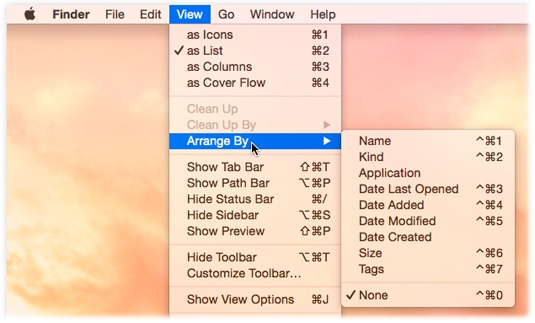You can’t get OS X El Capitan on a disc or flash drive; it’s a download-only operating system. In other words, you don’t get a single page of printed instructions.
To find your way around, you’re expected to use Apple’s online help system. And as you’ll quickly discover, these help pages are tersely written, offer very little technical depth, lack useful examples, and provide no tutorials whatsoever. You can’t mark your place, underline, or read them in the bathroom.
The purpose of this book, then, is to serve as the manual that should have accompanied OS X—version 10.11 in particular.
OS X El Capitan: The Missing Manual is designed to accommodate readers at every technical level. The primary discussions are written for advanced-beginner or intermediate Mac fans. But if you’re a Mac first-timer, miniature sidebar articles called Up to Speed provide the introductory information you need to understand the topic at hand. If you’re a Mac veteran, on the other hand, keep your eye out for similar shaded boxes called Power Users’ Clinic. They offer more technical tips, tricks, and shortcuts.
When you write a book like this, you do a lot of soul-searching about how much stuff to cover. Of course, a thinner book, or at least a thinner-looking one, is always preferable; plenty of readers are intimidated by a book that dwarfs the Tokyo White Pages.
On the other hand, Apple keeps adding features and rarely takes them away. So this book isn’t getting any thinner.
Even so, some chapters come with free downloadable appendixes—PDF documents, available on this book’s “Missing CD” page at www.missingmanuals.com—that go into further detail on some of the tweakiest features. (You’ll see references to them sprinkled throughout the book.)
Maybe this idea will save a few trees—and a few back muscles when you try to pick this book up.
OS X El Capitan: The Missing Manual is divided into six parts, each containing several chapters:
Part One covers everything you see on the screen when you turn on an OS X computer: folders, windows, icons, the Dock, the Sidebar, Spotlight, Dashboard, Spaces, Mission Control, Launchpad, Time Machine, menus, scroll bars, the Trash, aliases, the
 menu, and so on.
menu, and so on.Part Two is dedicated to the proposition that an operating system is little more than a launchpad for programs—the actual applications you use: email programs, web browsers, word processors, graphics suites, and so on. These chapters describe how to work with applications in OS X—how to open them, switch among them, swap data between them, and use them to create and open files.
Part Three is an item-by-item discussion of the software nuggets that make up this operating system—the 30-ish panels of System Preferences and the 50-some programs in your Applications and Utilities folders.
Part Four treads in more advanced territory, like networking and file sharing. These chapters also cover the visual talents of OS X (fonts, printing, graphics) and its multimedia gifts (sound, speech, movies).
Part Five covers all the Internet features of OS X, including the Mail email program and the Safari web browser; Messages for instant messaging and audio or video chats; Internet sharing; Apple’s free, online iCloud services; and connecting to and controlling your Mac from across the wires—FTP, SSH, VPN, and so on.
Part Six. This book’s appendixes include guidance on installing this operating system; a troubleshooting handbook; a Windows-to-Mac dictionary (to help Windows refugees find the new locations of familiar features in OS X); and a thorough master list of all the keyboard shortcuts and trackpad/mouse gestures in OS X.
Throughout this book, and throughout the Missing Manual series, you’ll find sentences like this one: “Open the System folder→Libraries→Fonts folder.” That’s shorthand for a much longer instruction that directs you to open three nested folders in sequence, like this:
“On your hard drive, you’ll find a folder called System. Open that. Inside the System folder window is a folder called Libraries; double-click to open it. Inside that folder is yet another one called Fonts. Double-click to open it, too.” See Figure 1.
To get the most out of this book, visit www.missingmanuals.com. Click the “Missing CD-ROM” link—and then this book’s title—to reveal a neat, organized, chapter-by-chapter list of the shareware and freeware mentioned in this book.
The website also offers corrections and updates to the book. (To see them, click the book’s title, and then click View/Submit Errata.) In fact, please submit such corrections and updates yourself! In an effort to keep the book as up to date and accurate as possible, each time O’Reilly prints more copies of this book, I’ll make any confirmed corrections you’ve suggested. I’ll also note such changes on the website so that you can mark important corrections into your own copy of the book, if you like. And I’ll keep the book current as Apple releases more Mac OS 10.11 updates.
